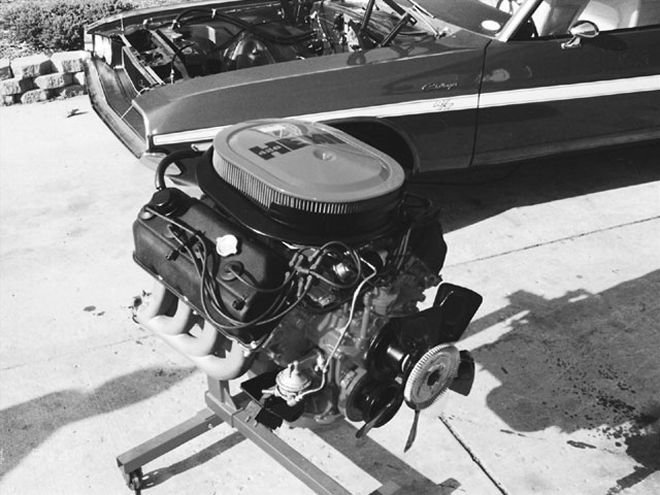
 Does this look like a 484ci Hemi? That's the idea. It's what's on the inside that counts. A 12.8:1 compression, a Cam Motion solid-roller camshaft, a 4.15-inch stroke, and other goodies make this Challenger a serious Camaro stomper.
Does this look like a 484ci Hemi? That's the idea. It's what's on the inside that counts. A 12.8:1 compression, a Cam Motion solid-roller camshaft, a 4.15-inch stroke, and other goodies make this Challenger a serious Camaro stomper.
For some, muscle-era Mopars are to be revered and protected, while others feel that modifying what the factory gave us is where it's at. There's even another segment of enthusiasts that feels the car should look as close to stock as possible, yet be able to rip the rearend out from under itself while doing a holeshot. The latter group is made up of the guys who show up at a-dare we say street race-looking to sucker some poor unsuspecting sap into losing his hard-earned money with the following: "What are you afraid of? Look, it's stock."
For those in the latter group, we may just have your recipe. Dave Dudek of Shelby Township, Michigan, revealed some of the tips and tricks of making his stock-looking Hemi give the power to rip off some low 11-second timeslips. If you think because it's a Hemi a basic rebuild will suffice, think again. There are a lot of things that need to be done inside the engine, and you can do some of the tricks we'll show.
The short-block was taken to Automotive Machine in Fraser, Michigan, to have the necessary machining done. Things like parallel and zero decking may not be required for a basic rebuild, but when you need to get every last bit of power from your engine with the parts you have, these things are the norm.
If you're planning to make a serious amount of horsepower, you'll need to ensure the engine can breathe. The Hemi has long been known for its breathing capabilities. Modern Cylinder Head in Clinton Township, Michigan, got the nod for prepping the big units. Early in the process, it was noticed that some work had already been performed on the heads, which at the time may have been deemed adequate. But, it was indeed hampering the flow characteristics. In other words, the Hemi breathed in nicely but didn't exhale as well. The intake ports were fine, but the exhaust ports had been machined for larger valve seats. This modification resulted in a less than optimal venturi effect. The head could have been welded, but as thin as the material was in that area on these heads, the heat from welding could have caused severe cracks in the head. A cracked head means replacement, and replacement of a Hemi head is not an inexpensive endeavor.
The old adage still holds true-how quick you go is directly proportional to how much you spend.
Flow NumbersFrom Superflow {{{600}}}At 28 Inches, 4.320 BSCIN-LiftExhaustIntake c.f.m.c.f.m..{{{100}}}61.275.0.{{{200}}}125.6158.5.{{{300}}}165.8250.0.400193.4317.4.500212.1365.2.550217.7375.5.600221.7373.7.650223.3371.9.700225.2371.5